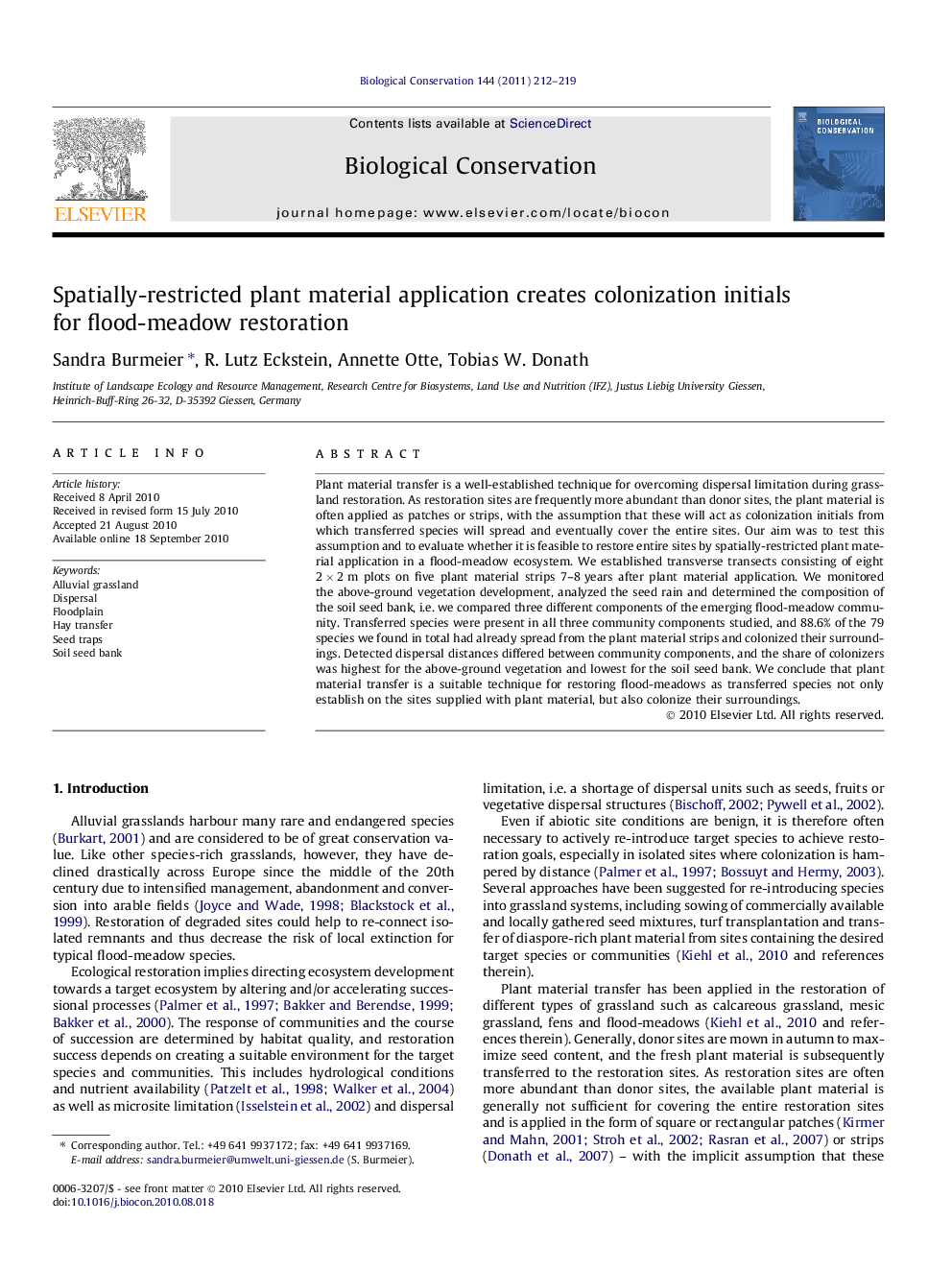| کد مقاله | کد نشریه | سال انتشار | مقاله انگلیسی | نسخه تمام متن |
|---|---|---|---|---|
| 4385679 | 1304547 | 2011 | 8 صفحه PDF | دانلود رایگان |
عنوان انگلیسی مقاله ISI
Spatially-restricted plant material application creates colonization initials for flood-meadow restoration
دانلود مقاله + سفارش ترجمه
دانلود مقاله ISI انگلیسی
رایگان برای ایرانیان
کلمات کلیدی
موضوعات مرتبط
علوم زیستی و بیوفناوری
علوم کشاورزی و بیولوژیک
بوم شناسی، تکامل، رفتار و سامانه شناسی
پیش نمایش صفحه اول مقاله

چکیده انگلیسی
Plant material transfer is a well-established technique for overcoming dispersal limitation during grassland restoration. As restoration sites are frequently more abundant than donor sites, the plant material is often applied as patches or strips, with the assumption that these will act as colonization initials from which transferred species will spread and eventually cover the entire sites. Our aim was to test this assumption and to evaluate whether it is feasible to restore entire sites by spatially-restricted plant material application in a flood-meadow ecosystem. We established transverse transects consisting of eight 2Â ÃÂ 2Â m plots on five plant material strips 7-8Â years after plant material application. We monitored the above-ground vegetation development, analyzed the seed rain and determined the composition of the soil seed bank, i.e. we compared three different components of the emerging flood-meadow community. Transferred species were present in all three community components studied, and 88.6% of the 79 species we found in total had already spread from the plant material strips and colonized their surroundings. Detected dispersal distances differed between community components, and the share of colonizers was highest for the above-ground vegetation and lowest for the soil seed bank. We conclude that plant material transfer is a suitable technique for restoring flood-meadows as transferred species not only establish on the sites supplied with plant material, but also colonize their surroundings.
ناشر
Database: Elsevier - ScienceDirect (ساینس دایرکت)
Journal: Biological Conservation - Volume 144, Issue 1, January 2011, Pages 212-219
Journal: Biological Conservation - Volume 144, Issue 1, January 2011, Pages 212-219
نویسندگان
Sandra Burmeier, R. Lutz Eckstein, Annette Otte, Tobias W. Donath,